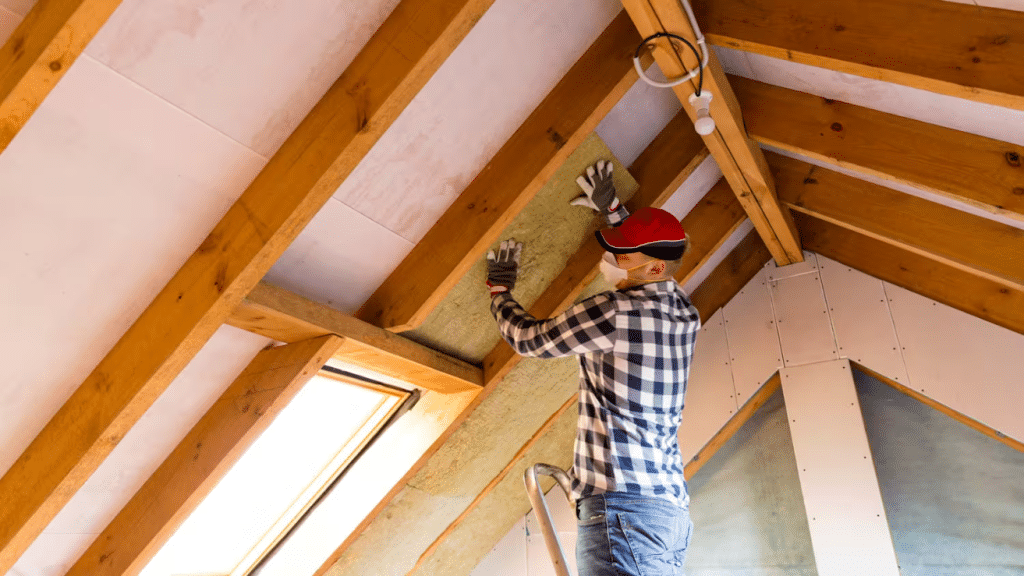Beyond its visual attractiveness, a home’s comfort is closely related to the temperature and internal atmosphere. In this equation, insulation is the unsung hero that works silently in the background to control temperature, save energy, and improve overall comfort.
This article will delve into the science behind insulation and how it plays a pivotal role in keeping your home cozy in winter and cool in summer.
The Basics of Insulation
Insulation reduces the rate heat moves from a building’s interior to its exterior. It is a barrier to prevent heat from escaping, preserving a more stable and cozy interior climate. The fundamental idea at work is the idea of heat flow—which can happen in three different ways: conduction, convection, and radiation.
1. Conduction
This is the direct transfer of heat between materials with varying temperatures. On a chilly day, for example, heat from your home’s warmer inside will attempt to escape through the walls to the outside, which is colder. The ability of insulation materials to impede or delay this heat transmission is considered.
2. Convection
Heat is transferred via fluids like water or air by convection. Insulation works to reduce convective heat transfer by limiting airflow through the creation of a barrier. This is particularly crucial for floors, walls, and ceilings because these materials can greatly affect the temperature.
3. Radiation
Heat is transferred through electromagnetic waves, which is known as radiation. Although conventional insulation materials may not directly block radiant heat, certain modern insulation products have reflective surfaces that can do so, increasing the insulation’s overall efficacy.
Types of Insulation Materials
Various Pricewise Insulation materials are available, each with unique properties determining their effectiveness in different situations. Common types of insulation materials include:
1. Fiberglass Insulation
Composed of fine glass fibers, fiberglass insulation is known for its cost-effectiveness and versatility. It comes in batts or rolls and is commonly used in walls, ceilings, and floors.
2. Cellulose Insulation
Constructed using recycled paper and imbued with fire-retardant chemicals, cellulose insulation stands as an environmentally conscious choice.It can be installed by blowing it into walls or attics as loose fill or by applying it as dense-packed insulation.
3. Foam Board Insulation
Rigid foam boards made of materials like polystyrene or polyurethane offer high thermal resistance. They are effective in residential and commercial applications and can be used in walls, roofs, and foundations.
4. Spray Foam Insulation
This expanding foam insulation fills gaps and voids, providing an effective air barrier. Spray foam insulation adheres to surfaces, sealing and insulating simultaneously.
5. Reflective Insulation
Incorporating reflective surfaces, such as aluminum foil, reflective insulation is designed to reflect radiant heat. It is often used in attics to control radiant heat transfer.
Factors Affecting Insulation Effectiveness
1. Thickness and Density
The thickness and density of insulation materials play a crucial role in their effectiveness. Increasing thickness enhances the resistance to heat transfer, while denser materials can limit convective heat movement.
2. Installation Quality
Proper installation is essential for insulation to perform optimally. Gaps, voids, or compression of insulation materials can compromise their effectiveness. Professional installation ensures that insulation covers all areas uniformly.
3. Moisture Control
Moisture can degrade the performance of insulation. Insulation materials with built-in moisture resistance or the incorporation of proper moisture control measures contribute to long-lasting effectiveness.
4. Ventilation
Adequate ventilation is important for managing moisture and preventing heat buildup in confined spaces. Properly ventilated attics and crawl spaces help maintain the integrity of insulation materials.
Unveiling the Power of Insulation for Comfort, Efficiency, and Sustainability
Insulation is a silent comfort guardian, working nonstop to provide a thermal barrier between your house and the outside world. Homeowners can improve their living spaces’ energy efficiency and comfort by making educated decisions based on their awareness of the fundamentals of heat transmission and the variety of insulating materials available.
Investing in high-quality insulation is an important part of modern house design and construction because it makes the home more comfortable and helps with energy savings and sustainability.
